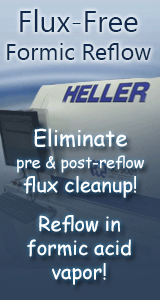Printed Circuit Board Assembly & PCB Design Forum
SMT electronics assembly manufacturing forum.
- SMTnet
- »
- Electronics Forum
- »
- 20 mil qfp bridging
20 mil qfp bridging
![]()
![]() Hello
Having a problem with bridging on 20mil pitch qfp...
- Aug 12, 1999
by
Wayne S.
Hello
Having a problem with bridging on 20mil pitch qfp...
- Aug 12, 1999
by
Wayne S.
![]()
![]()
![]() | Hello
|
| Having a problem with bridging on 20mil pit...
- Aug 12, 1999
by
K
| Hello
|
| Having a problem with bridging on 20mil pit...
- Aug 12, 1999
by
K
![]()
![]()
![]() | | Hello
| |
| | Having a problem with bridging on 20m...
- Aug 12, 1999
by
K
| | Hello
| |
| | Having a problem with bridging on 20m...
- Aug 12, 1999
by
K
![]()
![]()
![]() | | | Hello
| | |
| | | Having a problem with bridging ...
- Aug 12, 1999
by
| | | Hello
| | |
| | | Having a problem with bridging ...
- Aug 12, 1999
by
![]()
![]() | | | | Hello
| | | |
| | | | Having a problem with bri...
- Aug 12, 1999
by
ScottM
| | | | Hello
| | | |
| | | | Having a problem with bri...
- Aug 12, 1999
by
ScottM
![]()
![]()
![]() | Hello
|
| Having a problem with bridging on 20mil pit...
- Aug 12, 1999
by
davef
| Hello
|
| Having a problem with bridging on 20mil pit...
- Aug 12, 1999
by
davef
![]()
![]()
![]() | Hello
|
| Having a problem with bridging on 20mil pit...
- Aug 13, 1999
by
| Hello
|
| Having a problem with bridging on 20mil pit...
- Aug 13, 1999
by
![]()
![]() | | | | | Hello
| | | | |
| | | | | Having a problem wi...
- Aug 13, 1999
by
| | | | | Hello
| | | | |
| | | | | Having a problem wi...
- Aug 13, 1999
by
![]()
![]() | | | | | | Hello
| | | | | |
| | | | | | Having a prob...
- Aug 13, 1999
by
| | | | | | Hello
| | | | | |
| | | | | | Having a prob...
- Aug 13, 1999
by
![]()
![]() Wayne,
Sounds like a gasketing problem. When the horiz...
- Aug 17, 1999
by
Wayne,
Sounds like a gasketing problem. When the horiz...
- Aug 17, 1999
by
- SMTnet
- »
- Electronics Forum
- »
- 20 mil qfp bridging







